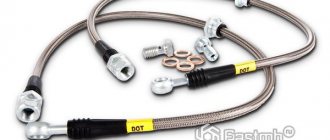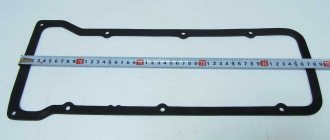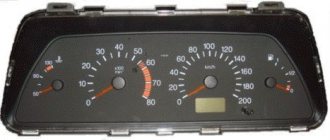The control unit for the stove or heater, call it what you want, is located on the center console of the VAZ 2110-2112 car and is responsible for the normal functioning of the temperature regime inside the cabin. If it malfunctions, it may happen that switching the handles will not give any reaction, accordingly, even at the maximum set temperature - only cold air can blow.
If a similar problem is observed with the stove block, then this part must be replaced. To do this, just have a couple of screwdrivers on hand, preferably with a flat blade and as thin as possible.
VAZ 2110: heater control system and its features
VAZ heater system
In the VAZ 2110 car, the heater control system plays a rather important role. If it breaks down, the heater itself stops working correctly. It can heat up the interior too much, or, conversely, not warm it up at all. Therefore, at the slightest breakdown of the control system, it should be repaired immediately or replaced altogether, otherwise it will be impossible to regulate the heating intensity of the car’s stove. On the VAZ 2110, the heating control system can be adjusted independently.
How does the DTV work?
The heating system in a car of this brand operates from impulses coming from the electronic unit. The unit itself receives information from the fuel combustion engine and compares these indicators with the heating intensity. There are certain temperature limits, the crossing of which is a trigger for the system to operate and the motor to turn on. There is a change in air flow and fan speed. All this serves to timely warm up the glass and the interior.
The sensor itself is a regular thermistor or semiconductor resistor. The relationship between resistance and heat is captured and sent to the vehicle's ECU as a specific measurement.
In addition to the obvious problems in measurements associated with a defect in the meter, there are a number of other malfunctions that one has to deal with:
- electrical wiring fault;
- mechanical damage to the sensor;
- operation outside acceptable limits.
Electrical wiring can be easily repaired by cleaning the contacts or reconnecting them more reliably. It happens that a break may not occur in the sensor itself, but somewhere along the line. Any malfunctions with the device itself are a reason to replace it, since repairing such a device is usually ineffective and more expensive than buying a new device.
System Features
VAZ 2110 heating system control
The heater control system has the following features:
- It is necessary to maintain a constant temperature in the car, which was specified by the driver.
- As a control unit, there is a controller, which is equipped with two handles. Actually, with their help the management process takes place.
Note: the handles are divided into right and left. Using the left one, you can set the desired temperature in the cabin, and the right handle allows you to turn on the fan.
- The heater controller receives the necessary information about how the heater damper is located. The position of this damper is adjusted in accordance with the data set by the driver.
Controller for automatic heater control system VAZ 2110
- To ensure that the air in the car warms up as quickly as possible, a circulation valve is used, which has its own switch.
Note: if you turn on this valve, no outside air enters the cabin, so you need to be prepared for the fact that the car will become very hot.
- If you want to cool the air in the cabin, you can use the electric motor fan. If the heater motor is faulty, it is advisable to replace it.
Note: it is possible to repair it. However, in this case, only one option is considered - cleaning the collector.
Stove components
Usually in winter there are problems with the operation of the stove. For some, it stops heating the air worse, for others, it does not heat at all. There are even cases when the air does not heat up, but cools down, because it is not working properly. Perhaps one of the elements of the heating system has been damaged. Let's look at what it consists of:
- Controller. It is also called the SAUO block. With its help, the required temperature is set. It also regulates the flow of cold or warm air to heat or cool the interior.
Automatic control system controller
Note: two types of controllers are suitable for the VAZ 2110 - four and five positions. They are quite difficult to find as they are no longer produced these days.
- Air temperature sensor. It shows what temperature is in the cabin. It has a small fan built into it.
Note: by the way, if the impeller of this fan stops spinning, then problems may occur. The solution can be simple: either replace the fan or clean it of dirt, if there is any.
- Micromotor gearbox. There are two types on sale: old and new samples. It’s better to take the first one, since the second one may not be suitable.
How to set up a controller
To increase the accuracy of temperature maintenance, you need to adjust the heater. For this:
- Remove the controller from its socket. This must be done as carefully as possible so as not to damage its parts.
- A trim potentiometer will help adjust the sensor.
- Its adjustment must be carried out in accordance with the calculation: one revolution of the potentiometer corresponds to 0.2 degrees.
Note: if you rotate clockwise, the temperature drops, and if you rotate it counterclockwise, the reverse process occurs.
TEMPERATURE ADJUSTMENT
The control unit is adjusted using the adjusting screw provided in the design:
Heater control unit for VAZ 2110
- In the vehicle interior, close the doors and roll up the windows.
- Install a thermometer to monitor the temperature near the temperature sensor in the upper part of the passenger compartment.
Heater control unit for VAZ 2110
Note: You can use tape to secure it.
- Set the fan lever to automatic mode.
- On the graduation scale, set the temperature corresponding to that shown on the control thermometer.
- Start the engine.
- After 15 minutes of operation of the heating system, the heated interior should in fact correspond to the set temperature.
VAZ 2110 stove control units
- If this does not happen, then you need to adjust the controller with a screw.
- Remove the controller.
- Turning the screw to the right increases the temperature.
- Turn left – decrease.
VAZ 2110 heater control unit
- Reinstall the stove controller.
- Carry out heating work again.
- After a positive result, the adjustment is completed.
Note: All automatic parts and devices of the heating system cannot be repaired. If a malfunction is detected in one of them, it is necessary to replace it with new prefabricated elements.
Determining the cause of the malfunction and eliminating it
Problems with the stove may occur for the following reasons:
- Coolant is leaking. Due to its lack, the cooling system does not work correctly, including the stove. In this case, a malfunction is observed only during a decrease in temperature. To resolve this problem, you should check the fluid level in the appropriate tank. If it is less than the Max mark, then you should top it up.
- The heating radiator may be faulty. To determine if it works, you need to touch it. As a rule, during the heating process it becomes warm or even hot.
- There may be an air lock in the system. To get rid of this problem, you should make sure that the front wheels are slightly higher than the rear ones. Turn on the engine and leave it like that for a few minutes.
- The heater may be leaking in some places. In this case, its complete replacement is necessary, since it will not be possible to eliminate this problem through repair.
- If the stove “blows weakly,” then the problem may be in the cabin filter. It should be changed.
Note: If you want the filter to remain operational as long as possible, you should install a guard on the air intake.
- It is possible that the controller is not working. The solution is to completely replace it.
- In addition, the heater damper may not always switch on time. Therefore, sometimes instead of warm air there can be cold air and vice versa.
Replacing any part will not be difficult. Typically this process takes no more than 5 minutes. However, a problem may arise during the process of replacing the micromotor gearbox. In this case, you will have to remove the frill, as well as the sound insulation of the engine shield.
Possible problems with the damper
As noted earlier, the stove has several dampers. However, problems can only arise with one of them. To determine which one is faulty, diagnostics should be carried out.
- Pay attention to how the damper moves when switching temperatures. If you hear extraneous sounds during this process, then there is a problem with the damper.
- If cold air blows normally, but hot air does not, then the problem is with the lower damper. At the same time, if hot air flows normally, but cold air does not, then the problem is with the upper damper.
You can determine the causes of problems in the car’s heating system with your own hands, since such work is not at all difficult to do even at home. However, the cost of repairs may vary. After all, several different parts often need to be changed. Sometimes, on the contrary, you just need to clean certain parts from dirt. Of course, before starting repairs, it is worth reviewing photos and videos on this topic. Instructions wouldn't hurt either. In addition, you can use the questions/answers section on many Internet sites.
Adjusting the stove controller
The manufacturing plant provides for heating the interior to the specified temperature in fifteen minutes with a deviation of up to two degrees. Use the controller knob to set a comfortable temperature in the car interior.
To check the proper functioning of the stove, use a regular mercury room thermometer. If after fifteen minutes the interior has not warmed up to the required temperature, the controller must be adjusted.
To do this, pull the heater control module back out and rotate the temperature regulator, first to the maximum value, then in the opposite direction. After carrying out such actions, install the unit in place and check the operation of the stove again.
At the same time, it is necessary to check the operation of the heater dampers. If there are extraneous sounds when switching temperature modes, then you need to check the condition of the dampers. If cold air flows well, but hot air hardly flows in, then the lower damper is faulty. If there is no normal flow of cold air but there is a good flow of hot air, there is a problem with the upper damper. The reason may be deformation of the dampers under the influence of air of different temperatures. In this case, it is better to replace the standard plastic dampers with aluminum analogues, which are more resistant to temperature changes.
After adjusting the controller, all heater elements are installed in their original places. Assembly is carried out in reverse order.
Lada 2110 with a thermos UOPD › Logbook › Troubleshooting instructions for automatic control system
With the arrival of cold weather, questions about the stove have become more frequent. I got tired of answering, and I decided to repost the information from the manufacturer’s website.
If she dies, then in the search we type “MOST FREQUENTLY ASKED QUESTIONS ABOUT SAUO”
For those who are not capable of this, we read for the hundredth time.
TROUBLESHOOTING INSTRUCTIONS FOR ACS
1. Check the sensor resistance. 22 C - (2800|20) Ohm 16 C - (2950|25) Ohm 30 C - (2600|25) Ohm Characteristic 25 Ohm/C If not working, replace.
2. With the engine running and a temperature sensor connected. Set the temperature dial to the “min” position (blue dot) and hold for 10-15 seconds. Start the engine. Disconnect the controller from connector X1 with a tester and measure the resistance between contacts X1.4 and X1.1 (car wiring). The resistance of the micromotor gear shaft position sensor should be 800-1200 Ohms for controllers 1303.3854, 1313.3854, 1333.3854 and 3600-5000 Ohms for controller 1323.3854.
3. Carry out an operation similar to step 2, but in the “max” position (red dot) of the adjuster. The resistance of the shaft position sensor should be 3200-5000 Ohms for controllers 1303.3854, 1313.3854, 1333.3854 and 1200-1600 Ohms for controller 1323.3854. If the resistance does not change or is absent altogether, then the micromotor gearbox is faulty - replace it. Or the controller is faulty - no voltage is supplied to the electric motor of the micromotor gearbox.
4. With the engine running, set the heater motor speed to maximum speed. By switching from the “min” position to the “max” position of the temperature controller, you can evaluate whether the heater damper is moving based on the sound level of the air escaping from the deflector located above the ACS manifold. If the sound does not change, the damper is broken due to foreign objects entering the heater through the glass deflector. Disassemble the heater from the engine compartment side and glue the drive with dichloritane.
Well, questions with answers
1. The heater operates only in extreme modes, and the dampers do not respond to intermediate indicators. What to do?
Disconnect the controller from the car and measure the resistance of the shaft position sensor (the connector is located in the “dashboard”, contacts X1.1 and X1.4 are on the controller). If the resistance is less than 200 Ohms or more than 8 kOhms, and the two wires that come from these contacts do not close or are not broken, then the shaft position sensor located inside the micromotor gearbox is faulty. In this case, the MMR should be replaced.
2.In what cases should the microfan of the interior air temperature sensor rotate? What voltage should be applied to check its functionality?
The temperature sensor fan does not rotate at minimum and maximum of the digital heater control unit. To check the functionality of the temperature sensor, apply a voltage of 1.2 V to the terminals marked “+” and “-“.
3. This is a problem with the VAZ 2110 heater - slightly warm air is blowing (the micromotor gearbox and the recirculation damper are working properly).
It is necessary to check the cabin air temperature sensor and the antifreeze level, since its low level affects the temperature regime (it may not reach the “stove”).
4. Should the micromotor-reducer be turned off in the “min” and “max” positions of the temperature set point, or will the MMR be constantly under voltage?
If this is a four-position block SAUO 1303.3854 of the old type (manufactured before 2001), then the voltage is reduced by a timer after 13+/-5 seconds. in the “min” position, and in the “max” (“red dot”) voltage is always supplied. The damper drive must withstand everything at an MMR voltage of 15V, but the voltage at the MMR must be 10+/-1 V according to the controller data sheet. If this is a five-position block SAUO 1313.3854, then the MMR turns off after 13 seconds of operation in “min” or “max”.
5. The five-position heater has stopped obeying the temperature setting handle - it blows hot air all the time. There is no sound of the damper moving. Is the micromotor gearbox really broken?
To determine the breakdown, you should first check the temperature sensor (see Troubleshooting instructions for the automatic control system). If everything is in order with the sensor, you should try to check with a tester whether the power supply is supplied to the gearmotor when switching the setpoint from “min” to “max” and vice versa (you need to do this within 13 seconds, otherwise the power will turn off). If voltage is supplied, it means that the micromotor gearbox is faulty.
6. Help me understand the operating logic of the automatic control system unit
The controller is designed for operation from minus 40 to plus 65 degrees Celsius. And the logic is simple: depending on the mismatch between the setpoint and the temperature sensor, the position of the heater damper is determined.
7. What is the operating algorithm of the automatic control system when the temperature sensor is turned off?
If the temperature sensor is faulty (disconnected), the heater operation algorithm should be as follows: at maximum (red dot) - movement to open the damper; at minimum (blue dot) - movement to close the damper, other positions are fixed depending on the temperature setting. If, when the temperature sensor is disconnected, the operating algorithm is different, that is, the damper rotates only at the extreme positions (min and max), then two malfunctions are possible: 1) the controller temperature set point (left handle) is faulty; 2) the position sensor of the micromotor gearbox on the heater is faulty (this is less likely). The conclusion is as follows: in the first case, it is necessary to change the controller (or replace the temperature set point).
8. What is the algorithm for controlling fan speed in automatic mode?
In automatic mode, if the temperature of the set pointer is close to the temperature measured by the temperature sensor, then the speed is minimal. If the mismatch between the set pointer and the sensor is more than 5 degrees, then medium speed is turned on (similar to position “1”).
9. How does the electric heater valve operate?
On the VAZ-2110 there is no heater valve. The temperature in the cabin is controlled by an air damper that supplies hot air. Antifreeze also flows into the stove in the summer, because of this, some car enthusiasts additionally install a tap to shut off the supply of antifreeze during the summer period of operation. The VAZ-2110 heater control system is automatic, the temperature is maintained with an accuracy of 2 degrees Celsius. In addition, operating an air damper is preferable to operating a valve.
10. The VAZ 2110 heater only works in position “2”. What could be the problem?
Most likely, the following malfunctions are possible. 1. An additional resistor on the heater body has burned out, which allows you to regulate the speed - a fan is connected through it in position “A” and “1”. In this case, you need to get to the heater (this is only possible from the engine compartment) and replace the resistor. 2. The wires inside the controller are burnt out (to fix it, you need to disassemble the controller and replace them). 3. The wire has come loose in the relay block located on the right under the hood.
Repair
As we have already noted, the design of stoves on dozens with carburetor and injection engines has practically no differences. Therefore, the repair instructions below are suitable for owners of a VAZ 2110 with both types of power units.
If you are planning to overhaul your old-style stove, we recommend starting with the purchase of a radiator. Use copper as it is more efficient and helps the heater work better.
To carry out repairs correctly, strictly follow the points presented in our instructions and rely on video materials.
There is a plug on the engine block through which coolant is drained into any container. If you plan to use the same antifreeze or antifreeze again, choose clean containers. Next you need to move the frill forward. This process will take quite a long time, so be patient. Next, you need to remove the windshield wipers and get rid of as much as possible of everything that could interfere with the repair process. Remove your stove body
It is divided into two parts, which is important to know in advance. The front part of the stove body is removed directly along with the fan. After this, the stage of dismantling the cabin filter begins.
Check its current status. If the filter is dirty, this is an excellent reason to replace it. The next stage involves removing the second part of the housing. Loosen the clamps used on the hoses a little. This will allow you to easily remove the hoses. Having applied some effort, you can now finally remove the radiator from its seat.
Reassembly
In fact, reassembling the unit only involves following the opposite sequence of operations. By disassembling the stove, you have the opportunity to simultaneously inspect other elements of your car to make sure they are working.
Get used to the fact that during complex repairs you need to check components along the way that are not related to the current problem you are solving. Even if the part is suitable for use, but has already worn out enough, it is easier to change it now than to carry out heavy dismantling work again in a couple of months.
The only nuance that you should pay attention to when reassembling is the type of stove
If you have an old-style heater, in this case it is important to pay attention to a couple of issues
- When the plastic housing is mounted in place, make sure that the pedal fits neatly into the groove intended for it.
- Check how tightly all the nodes fit into their seats. Otherwise, unpleasant consequences may arise that will force you to dismantle the entire assembly again. And this, as you already understand, is not an easy process.
That's it, now all that remains is to return the coolant back into the system and tighten the plug securely. Test your vehicle in a garage before driving it on public roads.
Design of the heating system VAZ-2110
It includes three main nodes. This is a control unit for the VAZ-2110 stove, an air duct system, and a heating unit. The stove is controlled via an electronic unit. It consists of knobs with which the driver sets the required temperature and fan intensity.
Another important component of the heating system is the air ducts. They pass directly from the stove itself, and each channel has its own separate function. Thus, the central channels are designed for interior ventilation.
The air distributor is responsible for supplying cool air to the cabin for ventilation or warm air for heating. The other two air ducts are designed to heat the interior in the back row. The rest are also intended for ventilation. Two side channels heat the mirrors and part of the interior. Separate nozzles are used to heat the driver's feet.
Let's sum it up
Malfunctions of the VAZ-2110 heater control unit can lead to both incorrect functioning of the vehicle’s heating system and complete failure of the heater. During the cold season, this will affect not only a comfortable stay in the car, but also safe driving for the driver of the vehicle.
Repairing the stove control unit can be done on your own if you have basic knowledge of electronics, a desire to work and improve your comfort.
High-quality repairs and timely regular inspections of the unit before the onset of cold weather will help you save money on stove repair services at service centers and the purchase of expensive heating system elements.
Block responsible for temperature
The central unit in the stove system is the heating unit. Its main function is to directly heat the interior. This block is arranged as follows. An electric motor with fan blades pumps hot air, three dampers perform the function of recirculation and closing/opening the channels. There is also a heater core. On modern new generation systems, heat exchangers are not equipped with a tap.
Modernization of the damper on the VAZ-2110
Malfunctions with the damper often result in the interior heating very poorly and slowly. The VAZ-2110 stove control unit is to blame. The controller is experiencing problems. The device does not send a command to extend the flap. In this case, it is recommended to check the temperature sensor. The controller handle is set to its extreme position and then twisted several times from the left to the right position. The temperature of the air flows must be checked by hand. In this way, the operating condition of the sensor is checked in one of the extreme positions of the handle. If the air flow changes the temperature when the knob is in the extreme position, then the sensor must be replaced. If the heating does not change, the cause is looked for in other places.
PRINCIPLE OF AIR FLOW
Heater control unit for VAZ 2110
In winter, adjustable flaps direct the main flow to the windshield heating:
- Air is supplied through deflectors to the side windows and into the center of the cabin.
- The air flow is distributed over two pairs of deflectors for heating those sitting in front.
- The distribution also goes through a tunnel in the floor to the rear seats, as well as additionally through two air ducts under the front seats.
Replacing self-propelled guns
Control units cannot be repaired - they are simply replaced with new ones. But first you need to make sure that this mechanism is the reason. Instead of a broken one, install a working control unit. Its price is about 1500 rubles. The element is very easy to dismantle: just remove the buttons installed nearby. And then you can remove the device. The handles are set to zero positions and then removed.











